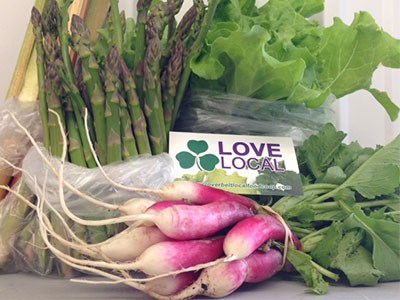Thunder Bay is implementing a strategy to get more locally produced fare into its food system, and it’s serving as a model for other communities around the North.
Developed by the non-profit organization EcoSuperior, the Thunder Bay Food Strategy is the result of extensive community consultation, from which emerged seven pillars: food access, forest and freshwater foods, food infrastructure, food procurement, food production, school food environments, and urban agriculture.
The strategy was endorsed by the city last summer, and implementation of some of the recommendations is taking place.
“When we wrote the strategy, we tried to make it something we felt we could implement,” said Kendal Donahue, coordinator for the Thunder Bay Food Strategy. “Certainly there’s no magic recipe.”
EcoSuperior opted for a one-year implementation plan that breaks the strategy down into manageable and feasible projects, which will be completed with the help of local partners.
One example is a new farmer-training program being developed by Sault College. Even with hundreds of farmers operating in the Thunder Bay district, local food supply is still not filling demand, but training for new producers could be one solution to encourage new ventures. EcoSuperior and the college are also in talks with the Nishnawbe Aski Nation to determine how the program could be made available to remote communities, Donahue noted.
A market study will establish what the area demand is.
“We know, for instance, that local beef is only supplying about one per cent of the local market, and so we know there’s a lot of capacity to grow there. “This is the kind of information that’s really useful for local businesses, local economic development organizations, and funders, especially when we want to start working towards new kinds of infrastructure.”
In another example, charitable organization Ontario Nature has taken on work related to forest and freshwater foods, particularly in the area of personal harvesting. The organization hosts harvesting workshops and is working with the city’s Community Economic Development Commission (CEDC) on a workshop for forest food entrepreneurs scheduled for the fall.
“One of the ways you can improve the ecology of the area and change people’s understanding of what the food system is locally is raising awareness and valuing forest foods and creating markets around that,” Donahue said.
Work is also being done around local food procurement to encourage city daycares and long-term care facilities to lean towards buying from local producers, but it requires a lot of education about available assets, equipment needs and costs.
“You think it’s simple: ‘I want to buy more local food,’” said Donahue. “But is a distributor even able to get that for you? Are they buying from any local farmers?”
Support is growing. The CEDC named regional food as one of its strategic directions and the Timmins Chamber of Commerce is organizing a producer-chef forum for the fall. Government agencies are also making more funding available for ventures related to agri-food.
All this is helping to change the public’s perceptions of how resource development benefits the economy, Donahue said. Food tourism events or the dairy farmer that branches out to produce yogurt can make equally important contributions.
“Agriculture tends to weather the economic downturn way better,” she said. “I think it’s hopefully starting to change their perspective on this stuff as having value, even though it looks different.”




